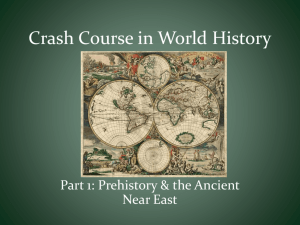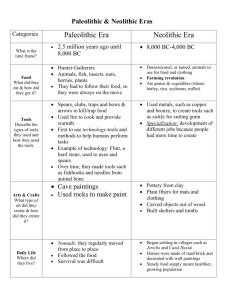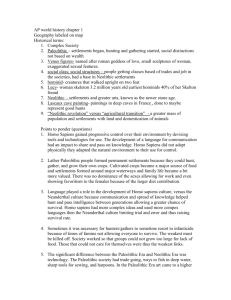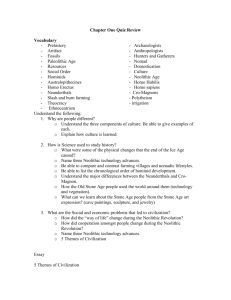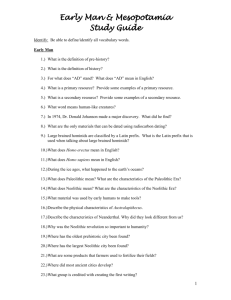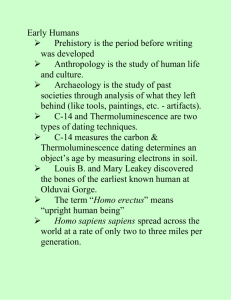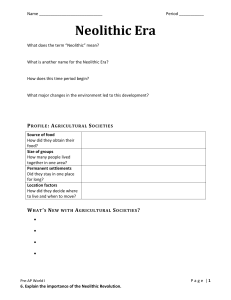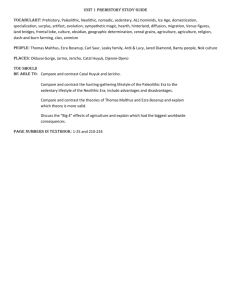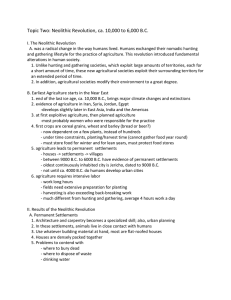Unit Outline Early Humans etc
advertisement
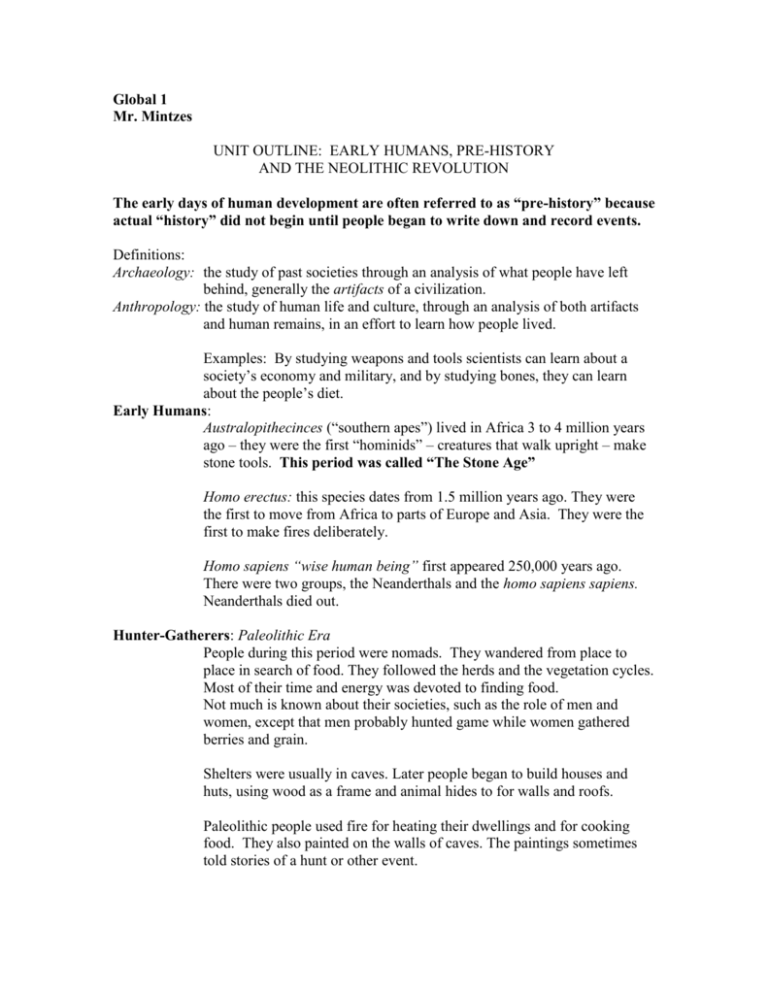
Global 1 Mr. Mintzes UNIT OUTLINE: EARLY HUMANS, PRE-HISTORY AND THE NEOLITHIC REVOLUTION The early days of human development are often referred to as “pre-history” because actual “history” did not begin until people began to write down and record events. Definitions: Archaeology: the study of past societies through an analysis of what people have left behind, generally the artifacts of a civilization. Anthropology: the study of human life and culture, through an analysis of both artifacts and human remains, in an effort to learn how people lived. Examples: By studying weapons and tools scientists can learn about a society’s economy and military, and by studying bones, they can learn about the people’s diet. Early Humans: Australopithecinces (“southern apes”) lived in Africa 3 to 4 million years ago – they were the first “hominids” – creatures that walk upright – make stone tools. This period was called “The Stone Age” Homo erectus: this species dates from 1.5 million years ago. They were the first to move from Africa to parts of Europe and Asia. They were the first to make fires deliberately. Homo sapiens “wise human being” first appeared 250,000 years ago. There were two groups, the Neanderthals and the homo sapiens sapiens. Neanderthals died out. Hunter-Gatherers: Paleolithic Era People during this period were nomads. They wandered from place to place in search of food. They followed the herds and the vegetation cycles. Most of their time and energy was devoted to finding food. Not much is known about their societies, such as the role of men and women, except that men probably hunted game while women gathered berries and grain. Shelters were usually in caves. Later people began to build houses and huts, using wood as a frame and animal hides to for walls and roofs. Paleolithic people used fire for heating their dwellings and for cooking food. They also painted on the walls of caves. The paintings sometimes told stories of a hunt or other event. THE NEOLITHIHC REVOLUTION (c.8000 BCE) The Neolithic Revolution was a change from hunting and gathering to systematic agriculture (growing crops for food and domestication (taming) of animals so they could be used for food, clothing and work (such as pulling a plow) Neolithic man learned how to plant and harvest crops such as grains, beans, and vegetables. Since they did not have to follow the vegetation cycles, they could lay out fields and “settle down” in permanent farming settlements. As they domesticated animals such as cattle, chickens and sheep for food they did not have to follow the herds for food. Specialization: As man developed better and more efficient ways to grow food and raise animals, and to store food for the future, they began to develop surpluses of food. As a result, fewer people were needed to supply food to the community. People began to develop specialized trades, such as artisans who made tools and weapons, or people who could produce clothing, etc. Large settlements: Jericho in Palestine and Catal Huyuk in Turkey were large Neolithic settlements. Catal Huyuk had shrines and statues to gods and goddesses. This tells historians that religion was becoming more important to Neolithic humans. Trade: As settlements grew and people wanted more things, Neolithic humans began to make contact with other settlements and trade with them for things they wanted or needed. Male/Female hierarchy: Men became more active in herding and farming, and became responsible for protecting the settlements from enemies. Women began to stay at home and became responsible for raising the children and making clothing. Men became dominant. This male dominance remained the norm in most societies for the next several thousand years.
